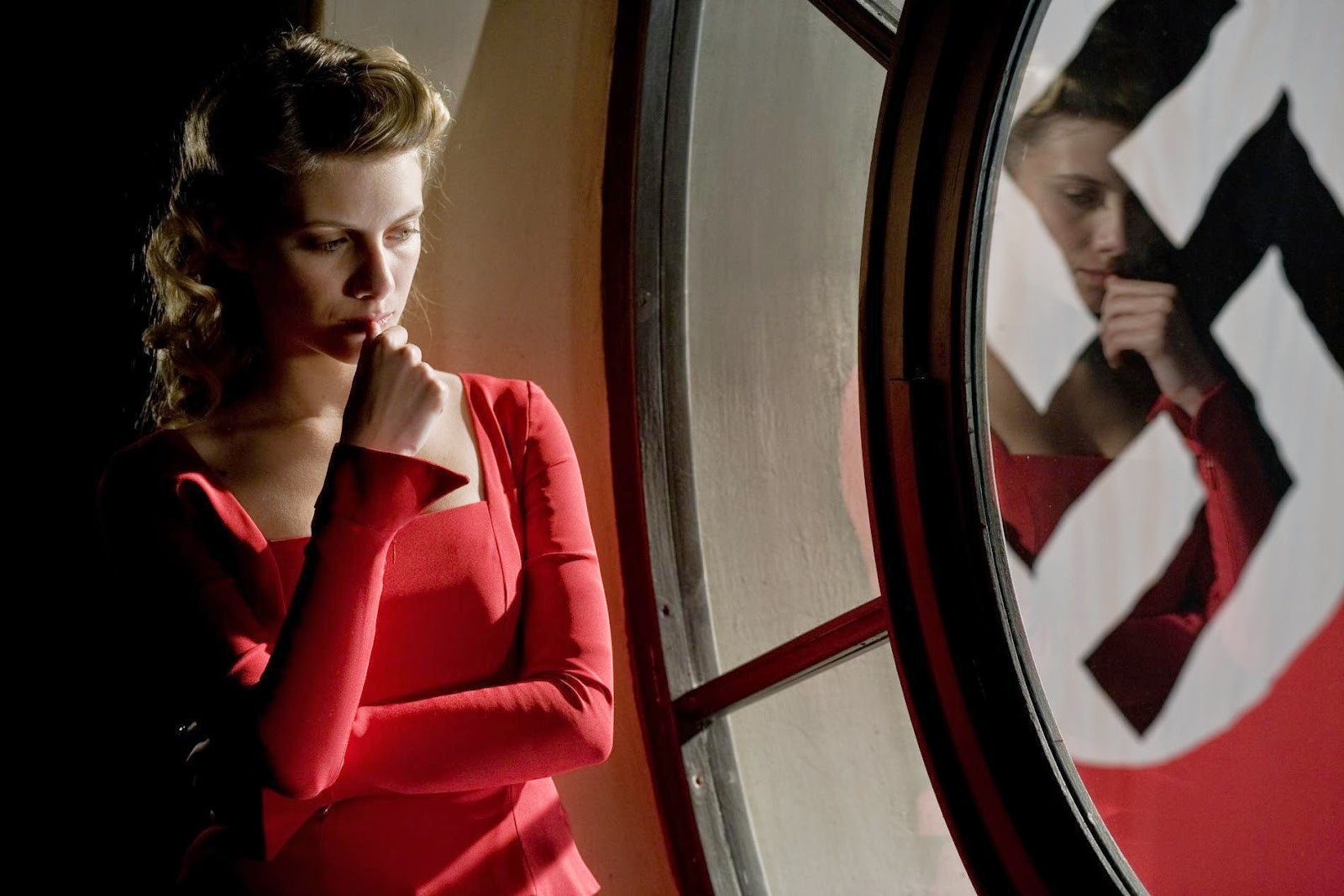The scene is etched in cinematic memory: the title card flashes, a nod to Douglas Sirk’s melodrama, and then red lipstick meticulously applied to a captivating face. Shoshanna (Mélanie Laurent) gazes down at a packed auditorium of Nazi officers from the projection booth, the air thick with anticipation. David Bowie’s voice cuts through the tension – deep, haunting, and introspective. The framing is intensely close, suffocating. She takes a sip of wine, as crimson as her dress. Finally, the symbolic war paint: red streaks across her face, a possible homage to Bowie’s own iconic makeup.
This powerful sequence from Quentin Tarantino’s Inglourious Basterds, still playfully misspelled, served as a potent introduction for many to “Cat People (Putting Out Fire)”. Like many of Tarantino’s masterful moments, the song itself is a cinematic treasure unearthed and repurposed, adding layers of meaning and resonance.
The genesis of this iconic track lies in Paul Schrader’s 1982 film Cat People. This movie, a remake of the 1942 Jacques Tourneur classic, has aged remarkably well, its themes resonating even more strongly as societal perspectives evolve. While the original Cat People (1942) relied on suspense and shadows to evoke horror, the 1982 version, with its explicit content and Bowie’s title track, aimed for a more visceral and contemporary impact. For the soundtrack of this updated vision, Bowie collaborated with the legendary Giorgio Moroder, who scored the film and whose influence has seen a significant resurgence, notably through his work with Daft Punk.
“Cat People (Putting Out Fire)” stands out as a testament to Bowie’s vocal prowess and dramatic flair. It’s a performance that is both commanding and, paradoxically, somewhat theatrical. Bowie’s genius often resided in this delicate balance – finding the profound within the absurd, revealing genuine emotion through artifice. His vocal delivery on “Cat People” is simultaneously precise and expansive, while the instrumentation builds tension like a series of carefully placed time bombs.
Yet, despite its undeniable power and cinematic association, “Cat People” is sometimes overlooked within Bowie’s vast and celebrated discography. Perhaps its 1980s release date casts a shadow for some, a decade often unfairly maligned in musical history. But Bowie, ever the innovator, navigated the 80s with characteristic brilliance. Inglourious Basterds undoubtedly reignited interest in “Cat People” for a new generation of Bowie admirers, mirroring Tarantino’s broader cinematic approach of introducing audiences to the rich tapestry of film history that inspires his work.
The song’s meaning is multifaceted, shifting with each context. Perhaps its most intriguing placement is as track number seven on Bowie’s 1983 album Let’s Dance. Let’s Dance, Bowie’s fifteenth studio album, is a fascinating and somewhat unconventional record. Produced in collaboration with Nile Rodgers and featuring an Iggy Pop cover, it marked a significant step into Bowie’s overt pop era. The album masterfully balances the operatic intensity of “Cat People” with moments of subtle pop perfection. This equilibrium, this ability to hold seemingly opposing forces in harmony, was a defining characteristic of Bowie’s artistry.
David Bowie’s ability to embody countless personas while maintaining a cohesive artistic identity is nothing short of extraordinary. It is this unifying thread that connected his diverse phases and resonated with a global audience, as evidenced by the outpouring of tributes upon his passing. His career, a constant state of evolution from Station to Station to reinvention after reinvention, perhaps ultimately led him to embrace his own lyric: “Just be still with me, you wouldn’t believe what I’ve been through.”

Shoshanna Dreyfus in Inglourious Basterds, a scene powerfully underscored by David Bowie’s “Cat People,” showcasing the song’s dramatic cinematic impact.
Support Passionweiss’s ongoing music and cultural journalism on Patreon, helping to keep insightful content accessible.

